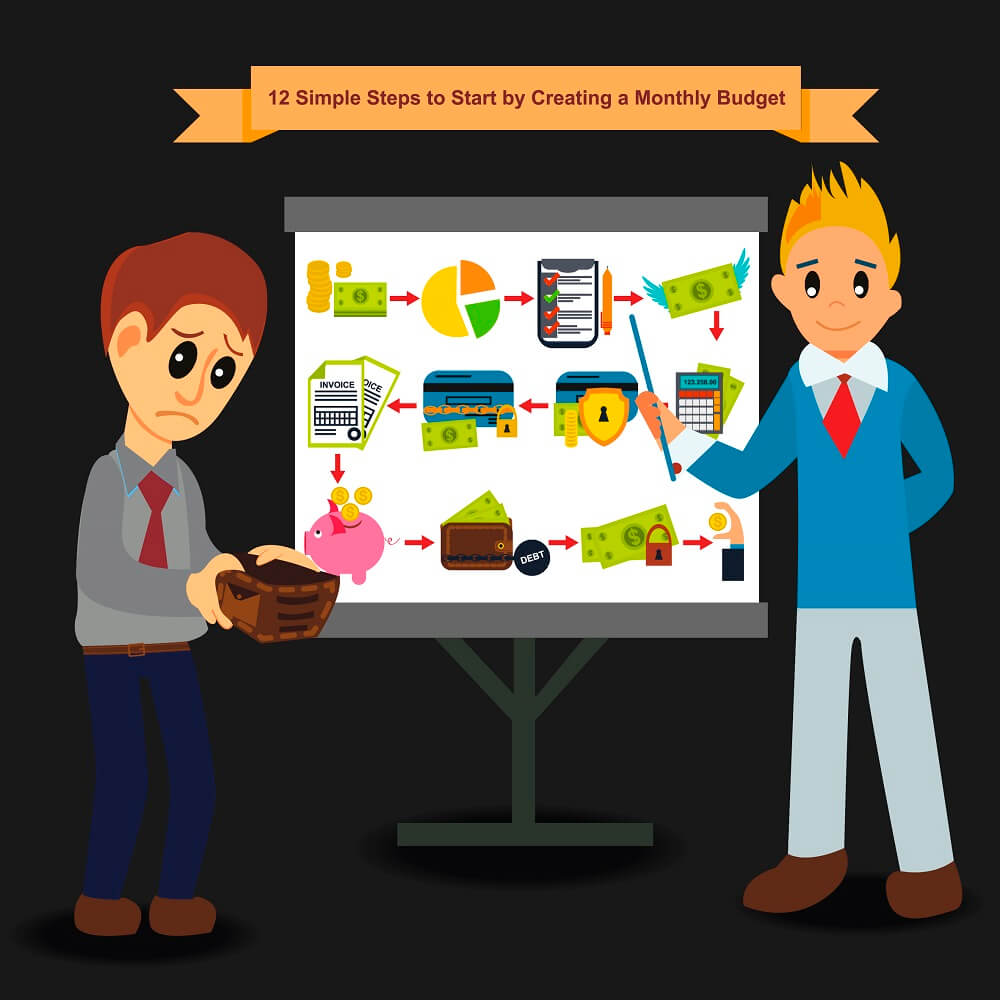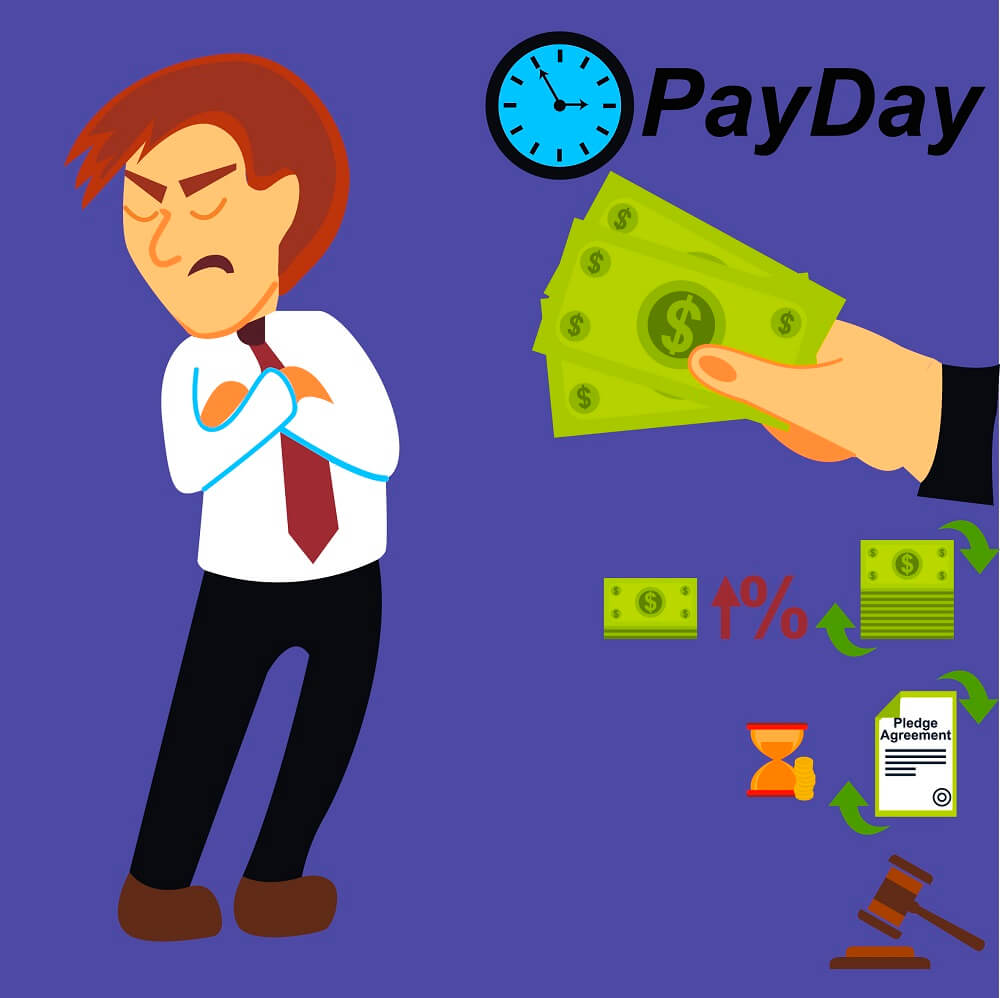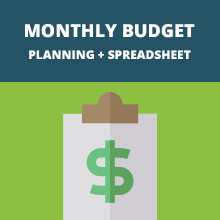Saving money, it’s something we all want to do and more so because saved money means more things we can do.
Not everyone is savvy about saving money and in the long run, it really can put a damper on your financial situation.
As we go through this article you’ll learn more about creating a monthly budget which will include tips to save money, as well as a free spreadsheet to create your own monthly budget!
![]() Download Our Monthly Budget Spreadsheet
Download Our Monthly Budget Spreadsheet
How to start by creating a monthly budget
You’ve decided that you need to learn to save money.
There are numerous reasons people decide to create a budget for themselves.
Sometimes, it’s just so that they have a little bit more spending cash, better management of bills, or perhaps you’ve been eyeing a vacation somewhere fun.
No matter the reason behind wanting to create a monthly budget, we’ve got you covered.

Step 1: Creating your monthly budget
The first step in creating a monthly budget is to figure out exactly how much you have in resources.
Resources are figured out by adding up your monthly income.
Monthly income is for example, a job that you work at either full time or part time, any money you earn on the side, and so forth.
When you add these numbers up you’re going to come up with a monthly budget.
Remember, if you get paid weekly you want to take that number and multiply it by four (four weeks in a month) so you know what to expect.
This number, of course, may change if you don’t have a set amount of numbers in your work week or other job changes.
Step 2: Adding up expenses

Step two includes figuring out your bills.
Bills including things such as rent, utilities, healthcare, insurance for your vehicle, luxury services such as cable, internet, and so forth.
Other things that you might want to factor into this list will also be necessities you might find yourself buying monthly, gas for transportation, and any other costs that you find yourself paying on a regular monthly basis.
When you’ve added up these numbers, you want to subtract them from the amount you came up with in step one.
Now the remaining number is what you have left to do with as you please.
Now for the sake of argument we’re going to assume you’re saving up for that dream vacation.
Which moves us to step three:
Step 3: How to create your monthly budget, plus a free spreadsheet
One of the best ways you can help to create and maintain a budget is by using a spreadsheet.
Now don’t stress when you hear that word, it’s not nearly as complicated as you might think.
In fact, we’ve even gone through the trouble of providing you with an easy and free to use spreadsheet to help you out.
Using a spreadsheet is great because:
You’ll be able to do as we mentioned in the other steps, such as putting down each bill and the cost.
This will offer a visual representation of how much money you’re spending each month.
You will also want to include how much money you make and those sources in the spreadsheet.
These are just three of a few more ways to create a budget.
Step 4: Knowing where your money is going
If you’re finding that while you’re creating your monthly budget that you’re spending more than what you’d like, there are ways you can work on that too.
When you’re creating a budget, it allows you to know exactly each source that is costing you money and how much.
If there are services that you don’t use that often or you can do without, now would be the time to remove them from your budget.
This could include things such as magazine subscriptions, cable services, data packages that go unused, among other things.
Step 5: Eliminating extra costs and becoming more budget friendly
Eliminating most extra costs from your budget isn’t too hard.
For things like magazine subscriptions, you can usually call a number given and a customer service representative will be happy to help cancel your membership.
Instead of buying those magazines every month that just sit and stack up instead of being read, now you can buy them at your own leisure individually from stores.
Creating a budget is about being aware of unnecessary expenses and knowing what to do about them.
Many people today are canceling their cable services in favor of much cheaper alternatives which can include services such as Netflix and Hulu which often offer the shows and movies people love without the expensive cable subscription.
Step 6: Open a savings account
I find that when it comes to money and saving it, the less I have complete access to it, the better.
One way you can keep money and save up more is by opening a savings account with your local financial institution.
If you already have a bank you’re happy using, then usually they have great options with savings accounts.
Each payday try to commit to having a certain amount of your check deposited in to the savings account automatically.
Over time, the interest can build up and you’ll have saved more and made more room in your budget for other things.
Step 7: Have a visual on your spending’s
One thing I hate most about having a debit card or even owning a credit card, is it’s just so easy to get caught up with purchases and not really paying attention to what I spend.
This means that because of the easy convenience that is offered of just swiping and going, it’s not letting you see what your spending in relation to what you have and what you need to save.
Opting for using cash over cards can be a better way to keep track of spending habits.
If you’re not a fan of carrying cash you can always do it this way:
- Know how much is in the bank
- Withdraw what you’re comfortable spending that doesn’t interfere with bills and such being paid
- Keep that cash on you and only pay for purchases with cash
- Don’t touch the remaining money in the bank or on your credit card.
Step 8: Pay off debts and other expenses immediately

One thing that can severely hinder a budget or staying on budget are things that you’re forced to make multiple payments on.
This can range from rent to own places, or anything that accumulates interest over time in which you’re making multiple payments on.
Some of these items may include:
- Credit cards
- Cars
- Loans
- Rent to own locations
- Other financial debts.
It can be difficult to make a budget when you’re stuck with all these outstanding bills that are gathering interest.
If you have anything like this, make sure you’re paying them off.
If you have a credit card, don’t go over your balance, pay it off immediately and a good idea is to even cancel it.
If you’re going through a rent to own place then try and have money saved up enough to pay the item off within the grace period.
Most grace periods in places like this are 90 days before interest occurs.
If you’ve got money saved up you can pay off the furniture or whatever the item is, before it gathers interest and costs more in payments.
Step 9: Always have something to fall back on
Let’s face it, when life happens we’re not always ready both financially or otherwise.
Things could be fine one minute and the next your car breaks down, you face a disaster or family emergency.
These things happen and it doesn’t seem like there is much you can do about it right? Wrong!
Here is something to consider that can help you in times of emergencies or crisis:
- Have extra savings set aside
- The savings need to be separate from your checking account or savings account
- Place a little bit in there at a time for emergencies. This way when an emergency or crisis occurs you’re not forced to spend all your savings and it doesn’t take away from your budget either.
You don’t want to spend time saving up all your hard-earned money just to have to spend it all on a car repair and sometimes bills don’t allow for the use of extra money either.
In the same situation, you don’t want to take all that hard-earned money you’ve accumulated in your savings account either.
If you have an account that’s separate from your main bank account and savings account this will allow you to have something to fall back on should you need it.
Step 10: Don’t live higher than what you can
We all have a rough idea as to what our annual income is.
With this information, we should be able to effectively break it down into categories of what is going out to bills and necessities and what is just about frivolous spending.
The problem with this becomes people tend to spend money they don’t have. Spending more than what you can afford can cause a lot of issues one of which leads up to debt.
Being in debt can cost you more in the long run than if you stick to a budget.
While it’s nice to have fun and enjoy fun things in life, you must stay within your means of affording those things while you do so.
For example, if you have a spending limit of about five hundred dollars a month, you don’t want to spend more than you can afford.
People who’re typically guilty of this type of thing include those who could be labeled as a shop-a-holic.
They enjoy shopping and spending money whether they can afford to spend the money that they have.
This can include maxing out credit cards, over drafting their bank accounts and taking out personal loans to cover the costs.
If you can only afford to spend twenty dollars a week or per payday, then you shouldn’t go over that limit for any reason.
Step 11: Stay away from Payday Loans
People who struggle with budgeting whether monthly or otherwise sometimes find themselves turning to places like payday loans.
These places will allow you to put up personal property as collateral, and then based on what you’re making, they’ll give you a loan in a specific amount in which you’ll be forced to pay back with a high-interest rate.
While to many these seem like a great idea because you’re getting cash back fast, these are terrible places to deal with and you should stay away from them at all costs.
What some don’t understand about PayDay loans is this:
- The high-interest rate will have you paying back twice the amount if not more, that you borrowed.
- Failure to pay can result in repossession of the item that was used as collateral.
- Failure to be able to repay can also result in court. In turn, the court can garnish your wages, and have you paying court fees not only for yourself but for the company that could be suing you.

Step 12: Don’t be afraid to have a financial advisor
Even with all the steps we’ve listed to help you learn to budget better, there are just some people who don’t have a knack for these types of things.
That doesn’t have to be a bad thing honestly, and there are ways to get around it.
Feel free to print out the free spreadsheet that we’ve included and take it with you to someone who can help advise you financially.
![]() Download Our Monthly Budget Spreadsheet
Download Our Monthly Budget Spreadsheet
Fill out the spreadsheet with all your information as we discussed earlier with what your monthly income is, and what you’re spending bill wise.
Talk to them and be open and honest about your spending habits.
This part is especially important because they can’t offer ways to help, suggest improvements or otherwise if you’re not honest and open about where your money goes.
These trained professionals have literally seen and dealt with different types of cases so you don’t have to be embarrassed by anything.
They literally are getting paid to help people like yourself learn how to save money, how much you should be putting back and if you’re choosing to invest it, what types of investments are wise.
While you might just want to go in for a consultation don’t be afraid to utilize them.
Most financial advisors are willing to sit down with you and help make a plan that fits your budget without holding you to any commitments.
Before you go, we have a few little pieces of advice remaining for those who’re trying to stick to a monthly budget or might need help doing so.
Holidays always seem right around the corner, and nothing is more pleasing than seeing the look on someone’s face who opens a gift you got them that they’ve been wanting.
However, it does neither them nor you any good, if you break your bank around these times just to make them happy.
When holidays or even birthdays are approaching make sure you’re sticking to your budgeting plan and not spending more just because of the time of year.
Many people will take advantage of a lay away program a store offers, but this is just one more thing that adds to money being taken from your budget.
Instead, just like with your savings account, set extra money aside that you can afford without going over the budget and use it to pay for things a little at a time.

In Conclusion
You’ll learn as you’ve read most of these tips and tricks that we’ve added to help with your budgeting needs that most of budgeting is just made up of not spending money you shouldn’t, and doing a lot of saving.
It can feel tedious and likes it’s not paying off, but the result will have you quite happy, we assure you.
Changing jobs to have a career that pays better can help you to manage a budget better. The more you make the more you can save or the more flexibility there is in a budget.
Finding or moving to an apartment that you can afford can also save more money.
For some people, it’s better to find a place where your only concern is rent and utilities are all included for one price.
This might be ideal for some, but not for others. Only you will know what’s right for you when it comes to your budgeting needs.
With that being said, we urge you to start budgeting today with the spreadsheet included so that you can get all your budgeting needs back on track and start putting more money back in your wallet for things you enjoy or would like to be enjoying in the future.
![]() Download Our Monthly Budget Spreadsheet
Download Our Monthly Budget Spreadsheet



